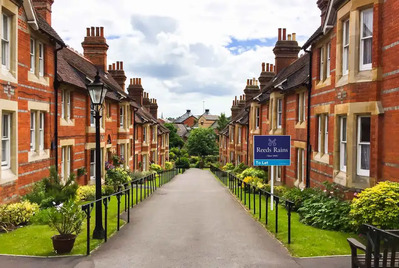
It’s been widely reported that university students, particularly those starting first year, have been struggling to find somewhere to live.
Despite having secured a place to study and ‘freshers’ normally being guaranteed accommodation in university halls, many new undergraduates have been left with a real challenge this year and some have ended up having to turn down their offer to study altogether.
Although not every student and area will be struggling to secure rental accommodation, a combination of not enough bespoke student accommodation as well as a lack of properties provided by private landlords is leaving some areas desperately short of properties to rent.
Students at Glasgow University in 2022 were informed ahead of the start of the new academic year that university accommodation couldn’t be guaranteed and applications for a place in ‘halls’ from anyone living within commuting distance would be automatically rejected.
Similarly, the University of the West of England in Bristol still had 485 students on its accommodation waiting list at the start of September, and St Andrews University has been advising prospective students to live almost an hour away in Dundee and commute.
Meanwhile, Manchester University has been offering new students £2,500 to live off-campus. They’ve also secured ‘contingency’ accommodation in Preston and Liverpool, around 45 minutes away, and will give students £100 a week to help with travel costs.
While that might make things financially viable for students, it’s far from ideal, as those who have to commute aren’t getting to enjoy ‘student life’ in the city they chose.
What’s caused such a huge shortage this year?
There are several factors, the biggest of which is the surge in demand caused by so many students having deferred their places due to the pandemic – and that’s on top of already booming student numbers from the previous two years.
According to UCAS, the number of students being accepted onto places at UK higher education institutions hit a record high of 570,000 in 2020 and, although the figure was slightly less in 2021 (562,000), 2022 has seen demand increase by 3% from international students and an additional 1,600 applications from UK 18-year-olds.
This pressure on existing student housing has been compounded by the fact that the purpose-built student sector has failed to deliver sufficient new beds, mainly due to a steep drop in planning applications during the early part of the pandemic.
On top of a shortage of new builds, many landlords have been pulling out of the student let market. While some have simply sold up and exited buy to let altogether – partly due to long-term investment plans maturing and partly prompted by the significant rise in property values over the last couple of years – some have switched to more lucrative Airbnb and holiday lets.
As the demand for ‘staycation’ accommodation has rocketed through the pandemic, so has the amount landlords can charge. Even before the pandemic, a report by ARLA Propertymark found that one in ten landlords were seriously thinking of switching short-term lets and nearly half had already begun offering them to enjoy greater flexibility. Increasing regulation of Buy to Let and the bigger profits offered by short-term letting were two key reasons.
Then there’s the lack of turnover of stock. Those who are further on in their studies and might normally have moved on to different accommodation after their first year, have chosen to stay where they are because they’re aware of the lack of choice out there and don’t want to risk an almost certain rent increase.
That means there simply isn’t the same flow of rental properties coming onto the market as in a ‘normal’ year.
Finally, there’s the sheer cost of renting. Students who can’t secure a place in university accommodation are faced with a private rental market where the average UK monthly cost went up by 12.3% in the year to July – that’s an average rise of £115 per month.
And with rising energy and household running costs, increasing numbers of non-student tenants are looking to move to smaller homes, pushing up demand and prices for two and three-bedroom flats, which most students simply can’t afford.
Opportunities for landlord investors
If you don’t already let to students, you should know that Houses in Multiple Occupation (HMOs) - where you have three or more unrelated people sharing - can make a great investment, for a number of reasons:
- There’s consistently strong demand. Every year, most universities are well subscribed to so the demand for student lets is unlikely to go anywhere any time soon. Just make sure you know which areas and particular streets are most popular so you get the pick of applicants who are willing to pay the best student rents.
- You get a regular 12-month rental cycle. Even though the academic year generally runs September to early July, it’s common for landlords to ask students to sign a 12-month agreement. And most are happy with that, as they stay on through the summer to either work, study or carry on with their uni social lives. If they do want to leave after a year, they generally plan well ahead and will give you plenty of notice.
- Yields are generally higher for multi-lets. Even though your ongoing costs for maintenance and admin might be higher than for a single let, charging on a per-room basis should bring in more than enough to cover the extra outgoings and leave you with additional profit on top.
- The rental income is usually secure. Although some landlords worry about students not paying, they’re actually some of the most reliable tenants. You can have them all sign one tenancy agreeing to be jointly and severally liable, meaning they’re obliged to pay the total amount of rent as a group. So if someone leaves the property or doesn’t pay, the remaining students have to make up their share of the rent. You can also ask their parents to act as guarantors, so you’ve got a back-up if a student defaults, as well as extra financial security if there’s any damage at the end of the tenancy.
And with the current shortage of suitable homes for students and a huge back-up of demand in many areas – plus landlords all over the country keen to sell properties that have been successful rentals for years, this could be a fantastic time to invest in the student market.
If you’d like to chat about the demand for student accommodation in your local area or discuss investment options, we’re always here to help. Just contact your local Reeds Rains branch and speak to one of the lettings team.
The Reeds Rains Content Marketing Team



